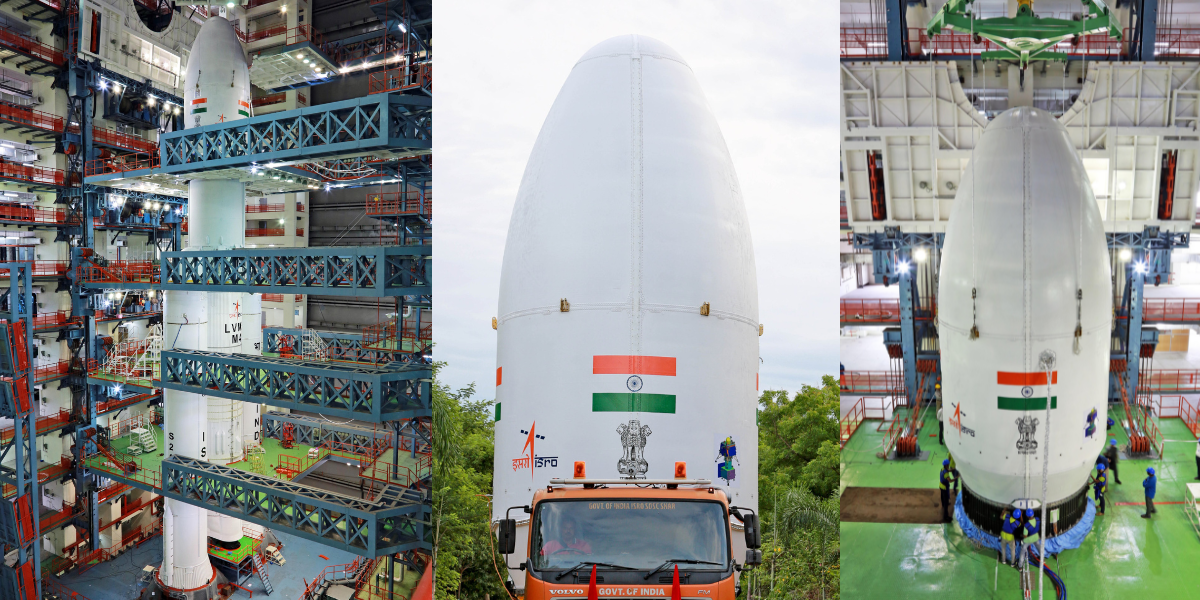Chandrayaan-3 successfuly launched, PM Modi says, it scripts a new chapter in India’s space odyssey

The Chandrayaan-3- India’s third mission to the moon took off successfully from the Satish Dhawan Space Centre in Sriharikota in Andhra Pradesh on July 14. The Vikram lander of the mission is expected to soft land on the surface of the South Pole region of the Moon on around August 23-24. The LVM3 rocket broke free from the second launch pad at the Space Centre at about 2.35 p.m. The Prime Minister Narendra Modi has hailed the relentless dedication of India’s scientists on the launch of Chandrayaan-3.
Sharing a tweet by Indian Space Research Organisations, the Prime Minister tweeted, “Chandrayaan-3 scripts a new chapter in India’s space odyssey. It soars high, elevating the dreams and ambitions of every Indian. This momentous achievement is a testament to our scientists’ relentless dedication. I salute their spirit and ingenuity!”
14th July 2023 will always be etched in golden letters as far as India’s space sector is concerned. Chandrayaan-3, our third lunar mission, will embark on its journey. This remarkable mission will carry the hopes and dreams of our nation. pic.twitter.com/EYTcDphaES
— Narendra Modi (@narendramodi) July 14, 2023
The success of this launch is not just important to India but also the world as crucial information from the mission will help future space missions globally. This mission demonstrates that India is competent enough in scientific advancements. LVM -3 rocket is just ready to undertake the mission.
On this occasion, the Prime Minister Narendra Modi underlined the significance of Chandrayaan-3, India’s third lunar mission. Earlier, in the day, he said, “14th July 2023 will always be etched in golden letters as far as India’s space sector is concerned. Chandrayaan-3, our third lunar mission, will embark on its journey. This remarkable mission will carry the hopes and dreams of our nation.”
Chandrayaan-3 will be inserted into the Lunar Transfer Trajectory after the orbit raising maneuvers. Covering over 300,000 km, it will reach the Moon in the coming weeks. Scientific instruments onboard will study the Moon’s surface and enhance our knowledge.
Chandrayaan-1 is considered to be a path breaker among global lunar missions as it confirmed the presence of water molecules on the moon. It featured in over 200 scientific publications around the world.
Till Chandrayaan-1, the moon was believed to be a bone-dry, geologically inactive and uninhabitable celestial body. Now, it is seen as a dynamic and geologically active body with the presence of water and sub-surface ice. Maybe in the future, it can be potentially inhabited!
Chandrayaan-2 was equally pathbreaking because data from the Orbiter associated with it, detected the presence of chromium, manganese and sodium for the first time through remote sensing. This will also provide more insights into the moon’s magmatic evolution.
The key scientific outcomes from Chandrayaan 2 include the first ever global map for lunar sodium, enhancing knowledge on crater size distribution, unambiguous detection of lunar surface water ice with IIRS instrument and more. This Mission has featured in almost 50 publications.
The 43.5 metre tall rocket LVM 3 weighing 642 ton will have three stages before separating Chandrayaan 3 just 16 minutes after take off from Sriharikota. Scientists are busy checking out last-minute details to ensure a precise launch.
Chandrayaan-3 will travel in an elliptical path to reach the surface of the moon for thirty days. The lunar mission is divided into three phases- the earth centric phase, the Lunar Transfer Phase and the Moon Centric Phase.
The lander is expected to make a soft landing and the rover will conduct the experiments on the lunar surface. The life of the payload carried by the propulsion module post ejection of the lander is between three and six months. The mission life of the lander and the rover is 1 Lunar day or 14 earth days. The mission is to study earth from lunar orbit and to measure the near surface and its density changes. The mission is also to carry out measurements of thermal properties of the lunar surface near the polar region and look out for lunar seismic activity around the landing site and delineate the structure of the lunar crust and mantle.